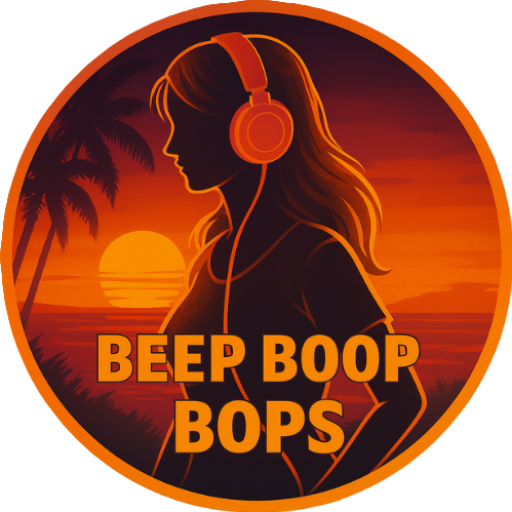When you think about an artist bio, what comes to mind? For many, it’s a simple collection of facts and figures, a dry recitation of dates and accomplishments. However, an artist bio is much more than just a list of achievements; it’s a narrative that encapsulates your journey, your passion, and your unique voice.
In the competitive world of music, where countless artists vie for attention, a well-crafted bio can be your ticket to standing out. It serves as your introduction to potential fans, industry professionals, and collaborators, offering them a glimpse into who you are as an artist. Your bio is often the first impression you make on someone who may not yet know your work.
It’s an opportunity to connect with your audience on a personal level, sharing not just what you do but why you do it. By weaving together your experiences, influences, and aspirations, you can create a compelling narrative that resonates with readers. This article will guide you through the essential elements of writing an artist bio that captures your essence and engages your audience.
Key Takeaways
- Introduce the artist with a brief overview of their background and career highlights.
- Include key information such as the artist’s musical style, influences, and notable achievements.
- Craft a compelling narrative that captures the artist’s unique journey and passion for music.
- Highlight the artist’s achievements, awards, and influences to showcase their impact on the music industry.
- Tailor the bio to fit the tone and style of the music website, keeping it concise and engaging.
- Review and edit the artist bio for clarity, coherence, and accuracy before publishing.
Identifying Key Information to Include
To begin crafting your artist bio, it’s crucial to identify the key information that should be included. Start with the basics: your name, stage name, and the genre of music you create. These elements provide a foundation for your bio and help readers quickly understand who you are.
However, don’t stop there. Consider including details about your background, such as where you grew up and how you got into music. This context can help paint a fuller picture of your artistic journey.
Next, think about the pivotal moments in your career that have shaped you as an artist. Have you performed at notable venues or festivals? Have you collaborated with other musicians or released albums that garnered attention?
Highlighting these milestones not only showcases your experience but also adds credibility to your narrative. Remember to include any awards or recognitions you’ve received; these accolades can serve as powerful endorsements of your talent and dedication.
Crafting a Compelling Narrative

Once you’ve gathered the essential information, it’s time to weave it into a compelling narrative. Your bio should tell a story that reflects your artistic identity and journey. Start by setting the scene—describe your early influences and what drew you to music in the first place.
Perhaps it was a family member who played an instrument or a concert that left a lasting impression on you. By sharing these formative experiences, you invite readers into your world and create an emotional connection. As you continue to develop your narrative, consider the challenges and triumphs you’ve faced along the way.
Every artist has a unique path filled with obstacles and breakthroughs. By being open about your struggles and how they’ve shaped your music, you can inspire others who may be on a similar journey. Use vivid language and imagery to bring your story to life; this will help readers visualize your experiences and feel more engaged with your narrative.
Highlighting Achievements and Influences
In addition to telling your story, it’s essential to highlight your achievements and influences in your artist bio. This section should showcase the milestones that define your career while also acknowledging the artists and genres that have inspired you. Start by listing any significant performances or collaborations that have contributed to your growth as an artist.
If you’ve released albums or singles that have received critical acclaim or commercial success, be sure to mention them as well. Equally important is discussing the influences that have shaped your sound and style. Who are the artists that inspire you?
What genres do you draw from? By sharing this information, you not only provide context for your music but also connect with fans who may share similar tastes. This can create a sense of community around your work and encourage listeners to explore your music further.
Tailoring the Bio for the Music Website
As you prepare to share your artist bio on various platforms, it’s important to tailor it for each specific music website or promotional material. Different platforms may have varying requirements or audiences, so consider adjusting the tone and content accordingly. For instance, if you’re submitting your bio to a music blog known for its casual style, feel free to adopt a more conversational tone.
Conversely, if you’re writing for a formal press release or industry publication, maintain a professional demeanor. Additionally, pay attention to the length of your bio based on where it will be featured. Some websites may prefer a concise version that captures the essence of who you are in just a few paragraphs, while others may allow for a more in-depth exploration of your journey.
Be prepared to create multiple versions of your bio that cater to different audiences while still maintaining the core elements of your story.
Reviewing and Editing the Artist Bio

After crafting your artist bio, take the time to review and edit it thoroughly. This step is crucial in ensuring that your narrative flows smoothly and effectively communicates who you are as an artist. Read through your bio multiple times, checking for clarity and coherence.
Are there any sections that feel disjointed or unclear? If so, consider rephrasing or reorganizing those parts for better readability. It’s also beneficial to seek feedback from trusted friends or fellow musicians.
They can provide valuable insights into how well your bio represents you and whether it resonates with them as readers. Be open to constructive criticism; sometimes an outside perspective can reveal areas for improvement that you may have overlooked. Finally, ensure that all information is accurate and up-to-date before sharing it widely—your bio is a reflection of you as an artist, so it should be polished and professional.
In conclusion, writing an artist bio is an essential task that requires careful thought and consideration. By identifying key information, crafting a compelling narrative, highlighting achievements and influences, tailoring the content for specific platforms, and thoroughly reviewing it, you can create a bio that truly represents who you are as an artist. Remember that this is not just a list of accomplishments; it’s an opportunity to connect with your audience on a deeper level and share your passion for music with the world.



